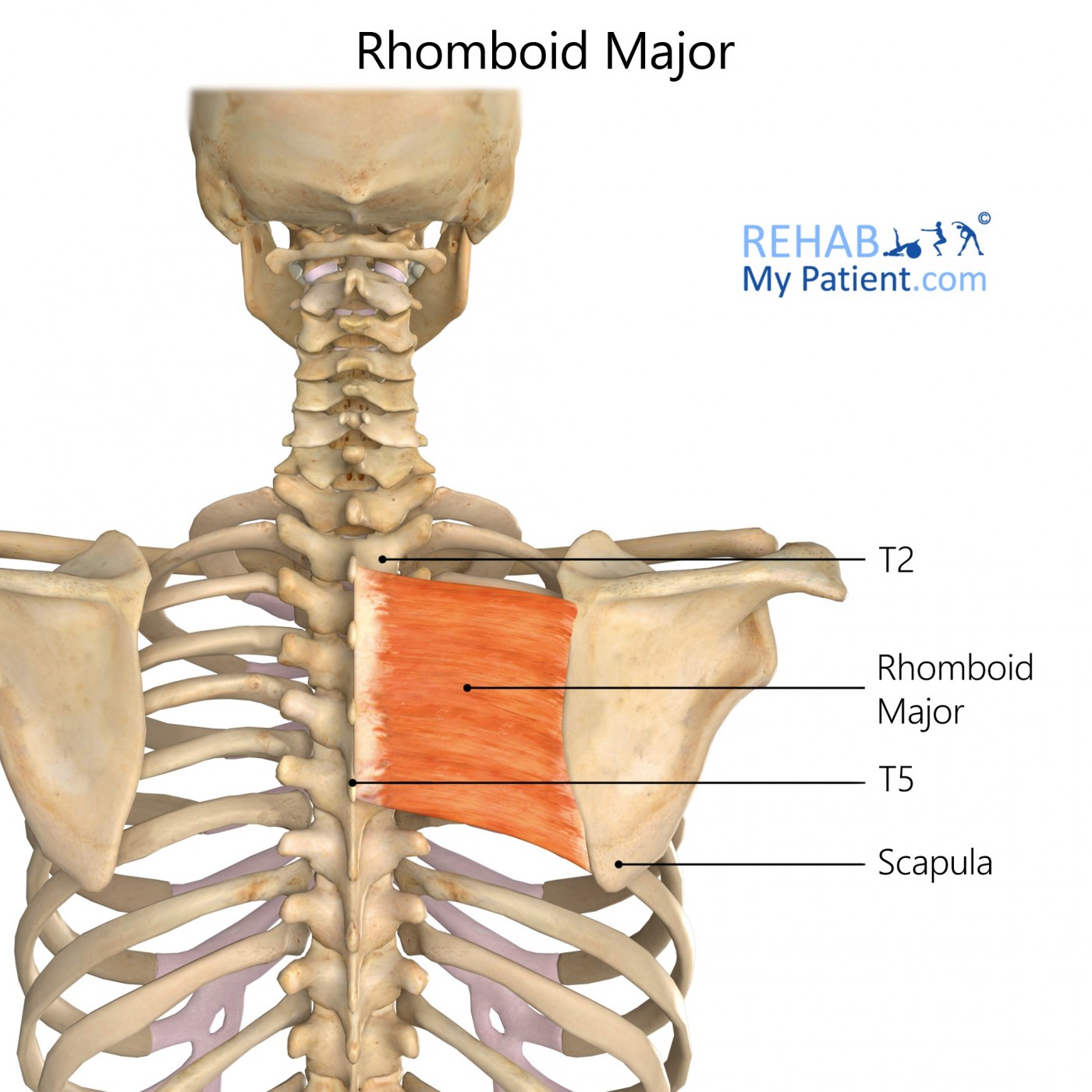Rhomboid Major
Posted on 28th Jul 2020 / Published in: Shoulder

General information
The rhomboid major is a type of skeletal muscle located on the back connecting with the scapula and the vertebrae within the spinal column. It works with the rhomboid minor to keep the scapula pressed to the thoracic wall for retracting the scapula along the vertebral column.
Literal meaning
Greater shape.
Interesting information
Pain between the shoulder blades is a typical symptom of injury to the Rhomboid major. These muscles are responsible for stabilizing the shoulder blades. As the arm is moved, squeezing the shoulder blades together and elevating them uses these muscles. A common type of injury to the Rhomboid major includes muscle strains or tears from a quick acceleration or deceleration of the arm.
Throwing a ball or swinging a racquet can cause the muscle to become injured. When heading out to play tennis, softball or any other sport where the muscles are going to be used in the shoulders, it is imperative that they be stretched beforehand. Common treatments for injuries to this area include icing of the affected area, massage, resting of the muscles, physical therapy exercises, and NSAIDs, such as ibuprofen, taken to reduce pain and inflammation.
Origin
Spinous processes of the thoracic vertebrae 2-5.
Insertion
Medial margin in the scapula between the scapular spine base and inferior angle.
Function
Adduction of the scapula.
Elevation of the scapula.
Downward rotation for the glenoid cavity.
Stabilization of the scapula and the associated glenoid cavity to help improve the overall efficiency of the muscles in the shoulder joint.
Nerve supply
Dorsal scapular nerve C4-C5.
Blood supply
Dorsal scapular artery.
Transverse cervical artery.
Upper posterior intercostal arteries.

Relevant research
The atonal (ato) proneural gene specifies varying numbers of SOP cells in distinct regions for the Drosophila embryo in an epidermal growth factor that is dependent upon the activation of the rhomboid protease. The manner in which ato activates rho in a limited number of sensory cells is still not clear. The rho enhancer is active within a subset of abdominal SOP cells for inducing larval oenocytes and showing that RhoBAD is regulated through the Abd-A Hox complex and the Sens transcription factor. Ato indirectly stimulates both of the elements and enhances the RhoA reporter activity by interfering with the abilities of the Sens repressor to bind the DNA.
Witt LM, Gutzwiller LM, Gresser AL, Li-Kroeger D, Cook TA, Gebelein B. Atonal, Senseless, and Abdominal-A regulate rhomboid enhancer activity in abdominal sensory organ precursors. Dev Biol. 2010;344(2):1060-1070. doi:10.1016/j.ydbio.2010.05.011
Rhomboid major exercises
Door knob stretch
Find an open door that has doorknobs on either side. Place the bottom corner of the door between the front half of both feet, and place feet about shoulder width apart. Grab the left side knob with the left hand and the right side knob with the right hand, and bend the hips to drop the weight of the body backwards as if to sit down. Keep the knees straight and focus on pulling the shoulder blades apart to stretch the rhomboid. Hold each stretch for 15 seconds and repeat for a total of four repetitions.
Sign UP
Sign up for your free trial now!
Get started with Rehab My Patient today and revolutionize your exercise prescription process for effective rehabilitation.
Start Your 14-Day Free Trial